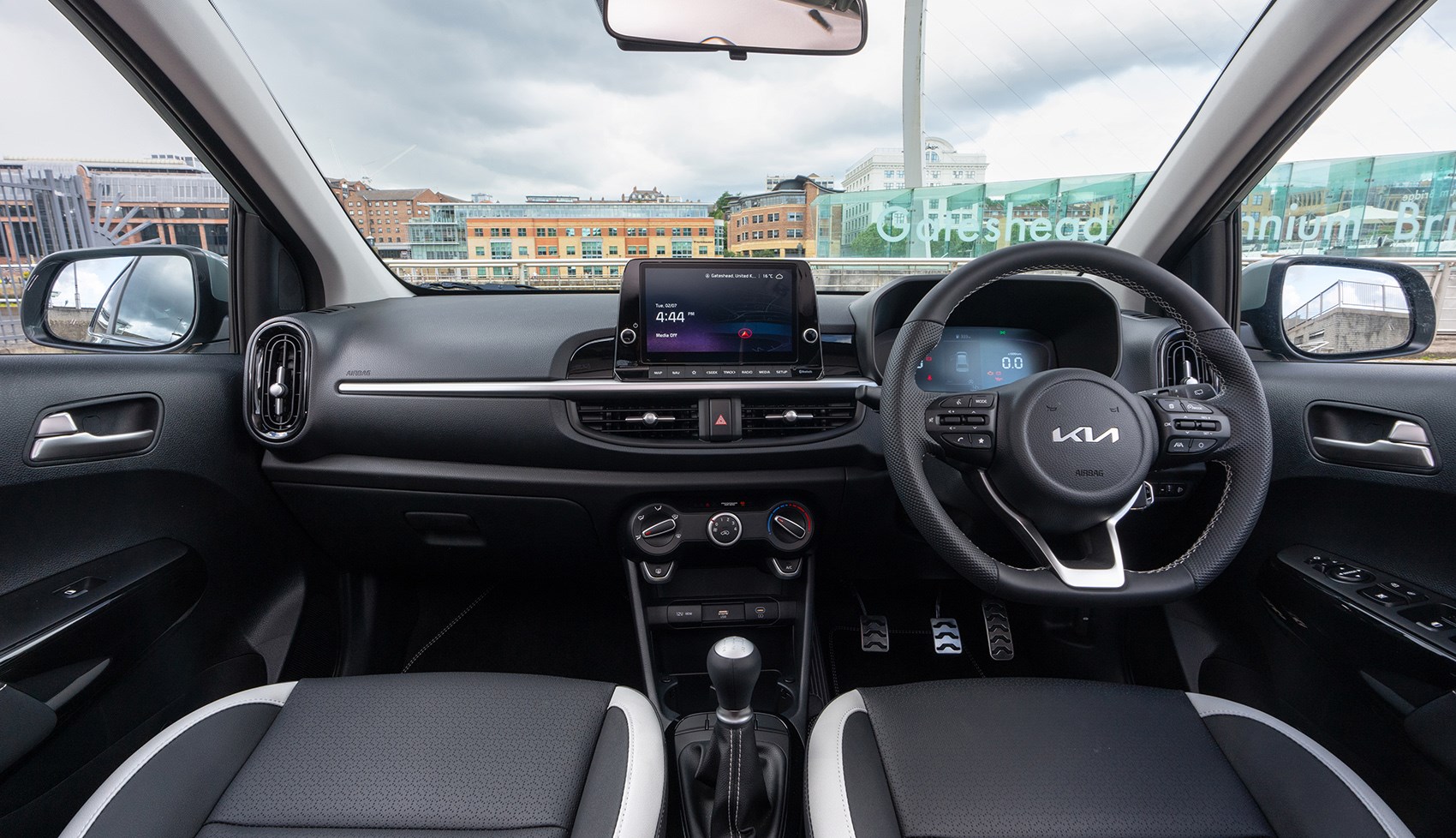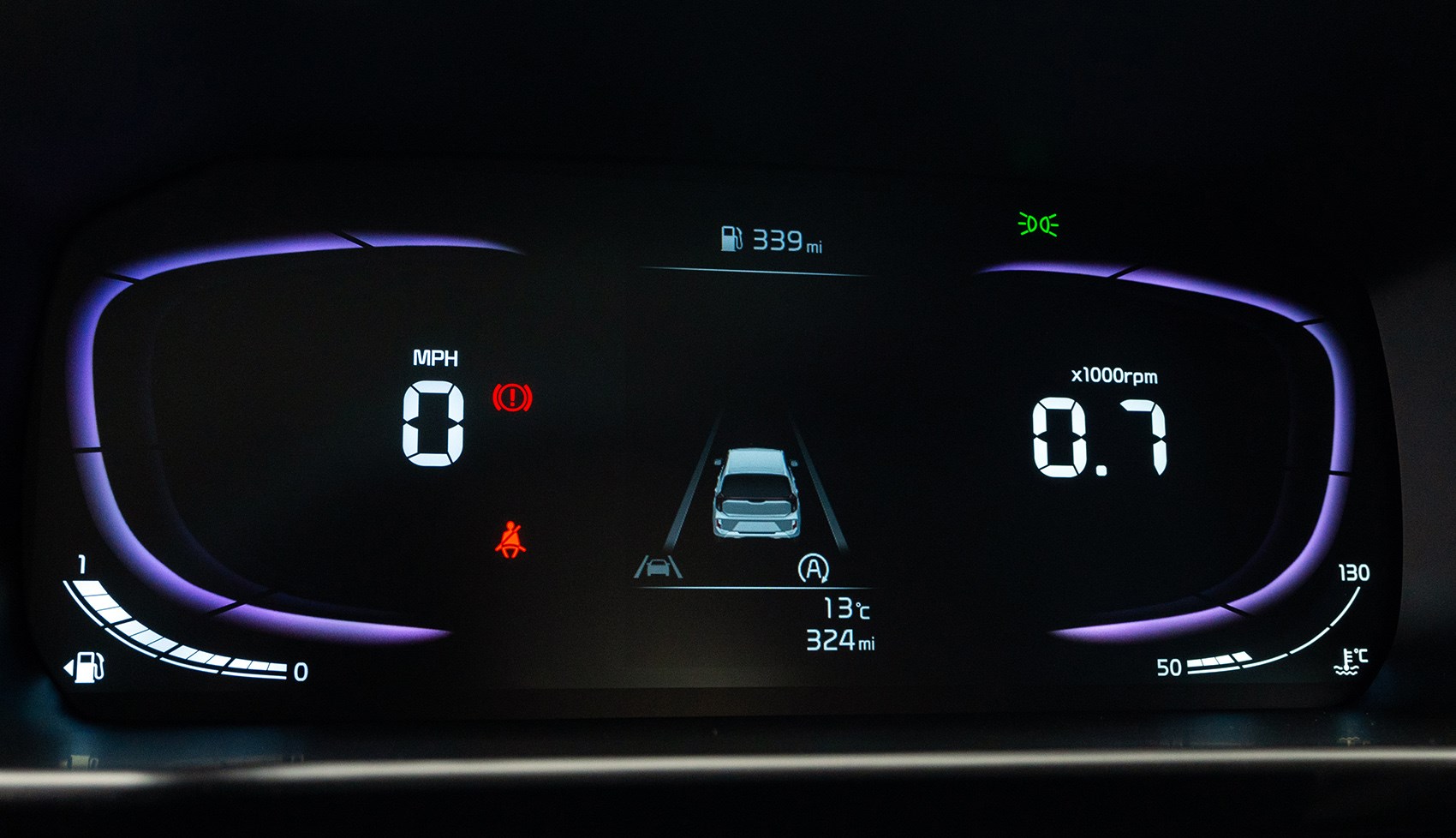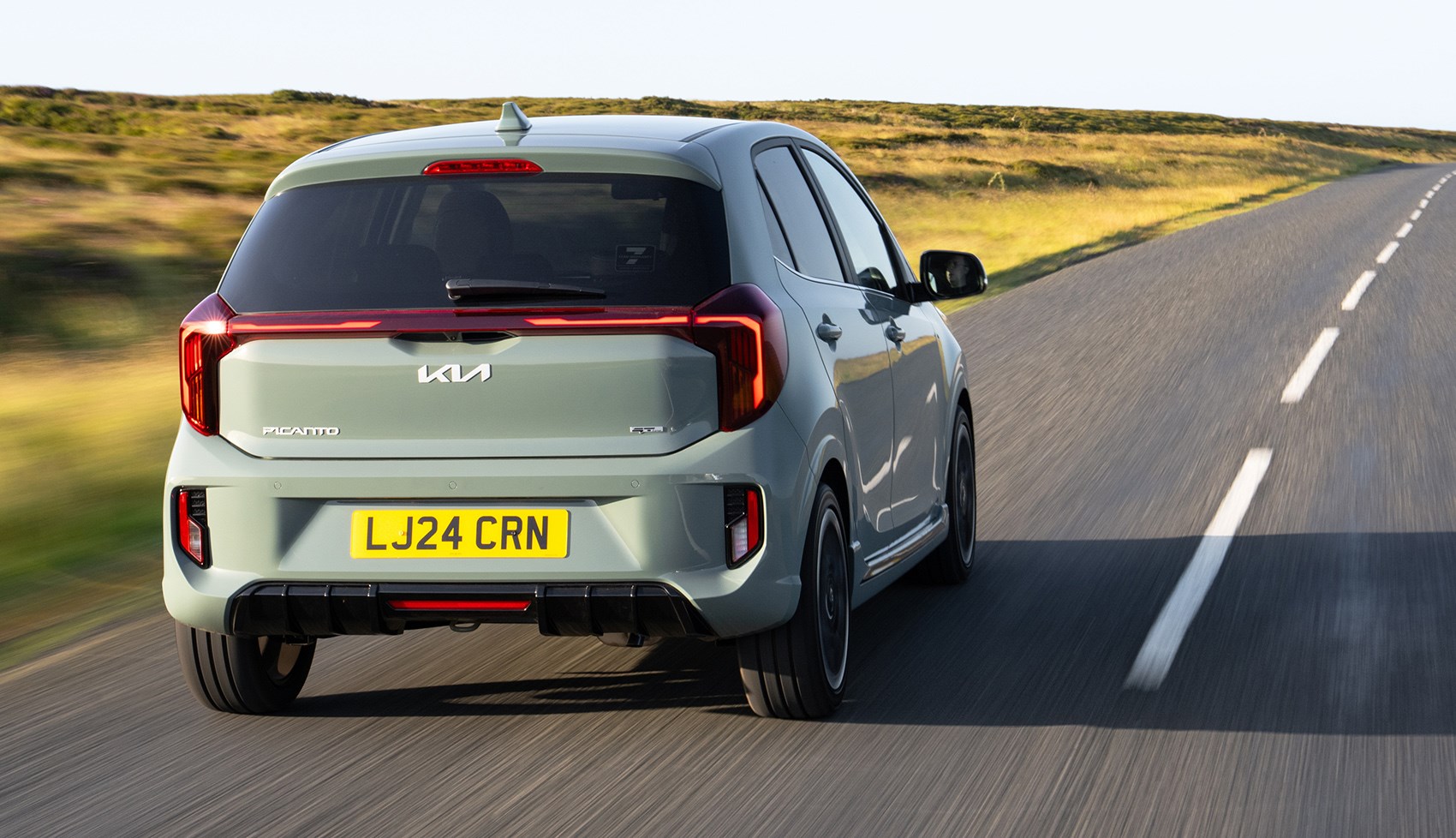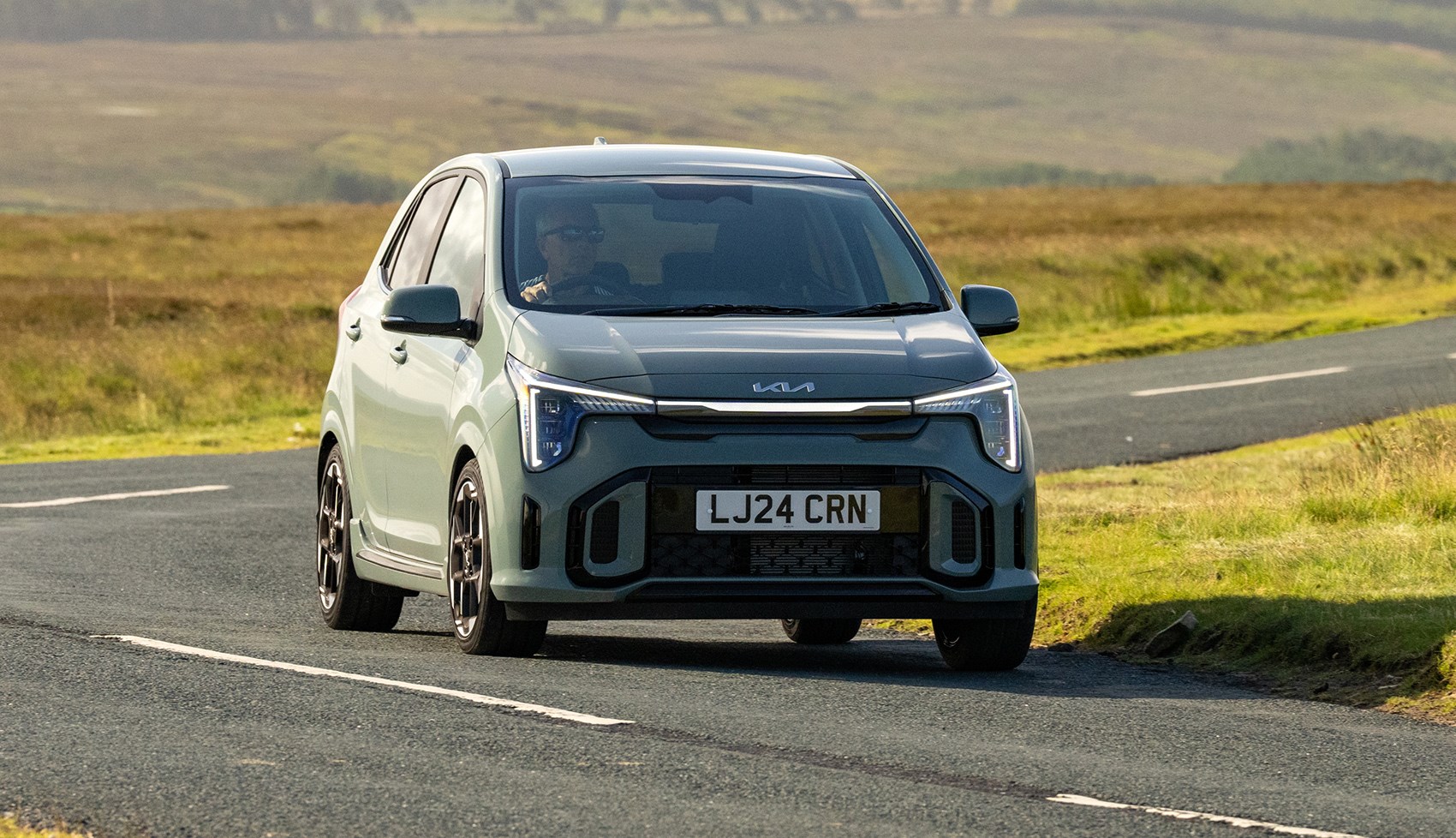► Updated Kia Picanto keeps the A-segment flame alive
► Competitive price and specs put it to the top of the class
► 1.2 engine is fastest offering… for now
Oh, how quickly the car industry changes. In 2017, when the wraps came off the previous Kia Picanto at the Geneva motor show, you couldn’t move for city car rivals – from the Citroen C1 to the Volkswagen Up, there was something for all smart city slickers looking for some pint-sized fun. Fast forward seven years and the big players are abandoning the A-segment in their droves, chasing high-profit electric SUVs.
That’s progress for you. Out with efficiency and in with profligacy under the EV flag of convenience. Thankfully, Kia has persisted in the city car market, and presents the fourth iteration of its 20-year-old Picanto line. Yes, it’s a facelift of the last one, and yes, the engine range has been slimmed down, but it fights on with a bold new look, and that consumer-friendly seven-year warranty. And bravo to that, we say.
At a glance
Pros: Well-equipped, solid interior, easy to drive, great in cities, lively performance
Cons: Basic engine needs thrashing, optional automatic is awful, the excellent old 99bhp turbo has been dropped
What’s new?
This facelift of a seven-year-old car brings it visually bang up to date with a striking new front end and an ever-so fashionable light bar decorating the rear end. Kia’s hoping that the new corporate front-end style, ushered in by the EV9, will give the Picanto plenty of youthful appeal – while not scaring off the car’s core demographic.
They’ll appreciate that the interior and dashboard haven’t been changed very much. There’s still plenty of room inside, while the dashboard and controls remain pretty much as they were.

As it stands, we reckon the Picanto does make an ideal first car for a younger driver, or for older motorists who are downsizing. A seven-year warranty means it makes a stonking used buy, too – purchase a car that’s fresh off a three-year PCP deal and it’ll still have more cover remaining than a brand-new Suzuki Ignis.
What are the specs?
The facelift may have changed the way the Picanto looks on the outside, but the oily bits remain resolutely unchanged – and none the worse for that. There are two engines available, a 1.0-litre three-cylinder unit, and a larger 1.2-litre four cylinder. The old 99hp turbo triple, which was something of a Q-car, has been dropped, more’s the pity.
The basic, 1.0-litre engine provides 61bhp. The thrummy three-cylinder soundtrack and slick five-speed manual gearbox are a good combination, unlike the automated manual version, which is slow and unresponsive. The larger 76bhp 1.2-litre four-cylinder fitted to top-of-the-line GT-Line S pulls the Picanto around much more willingly.
The model range is made up of the ‘2’ and ‘3’ trims, as well as the sportier GT-Line and larger-engined GT-Line S trims. All are well equipped for the money, featuring a decent amount of safety and convenience kit.
What about the interior?

The dashboard boasts a simple layout. All models get a digital instrument screen to replace the old car’s dials, but the chunky infotainment remains as it was – as do the knobs and dials for the climate control system. For those getting fatigued by touchscreen overdose, jumping into a Picanto is an excellent pallet cleanser.
Even the lowest spec ‘2’ model gets a 4.2-inch driver’s information screen to replace the conventional dials of the outgoing entry level cars. This is no bad thing, because the display is simple and pleasing to the eye and isn’t affected by direct sunlight.
All models get a six-speaker sound system connected to the 8.0-inch infotainment set-up. We think this is the best available in a city car right now – it’s fully featured, with wired Apple CarPlay and Android Auto as well as a seven-year subscription to Kia’s ‘UVO’ connected services. More importantly it’s slick and very simple to use.

Adding to the sheer rationality of the Picanto is its spacious interior. It can genuinely accommodate four six-foot adults, which is not something you’re going to want to do in a Fiat 500. As for five? Not unless you’re all slim and very good friends.
As for its 255-litre boot, that’s good for its size, beating the Toyota Aygo X – although the similarly-priced and larger Dacia Sandero beats it hollow, though, offering 328 litres seats up, and 1,108 with them down.
How does it drive?
A quick drive is all it takes to remind you that modern small cars are ridiculously capable and provide some much-needed fun at sane speeds in the bends. The Picanto’s wheel-at-each-corner stance and light controls mean lend it perfect small car agility, which ever engine or trim level you opt for. In terms of ride quality, if you value smoothness, go for the smaller-wheeled ‘2’ version, but for fun, you’ll prefer the GT-Line.

Stiff suspension means the Picanto corners flatly and there are impressive levels of grip. If comfort is your priority, the 14-inch wheels of entry-level cars do an admirable job of dealing with potholes and broken road surfaces. The GT-Line has 16-inch wheels which while great to look at do transmit a sharper edge through to the cabin.
Put simply, though, the Picanto is perfectly tuned for the city, where it will spend most of its time, with a tight turning circle and easy controls. Those same qualities shine through on a twisting country lane, too.
Before you buy (trims and rivals)
In this era of city car paucity, the Kia Picanto is a breath of fresh air, with a choice of two engines, and four trim levels. Forgive the cliché, but if you’re in the market for a tiny car, there’s something for everyone here – aside from the gap vacated by the loss of the hot-hatch bothering old 99hp turbo model.
Despite the comparative age of the basic car, it stacks up very well next to younger models such as the Toyota Aygo X, especially when you consider the starting price as one of the cheapest cars in the UK. Other rivals include the long-lived and still popular Fiat 500, the closely related Hyundai i10, the MG3 (more so once the non-hybrid model hits the shores), and the larger Dacia Sandero.

Verdict: Kia Picanto
City cars may have fallen out of favour with manufacturers who have concluded that there’s not enough profit in them, but there’s still a ready market (just ask anyone looking for a used Up, C1 or 108). The facelifted Kia Picanto is a great example of the breed, and one that will leave one wondering at the sheer profligacy of larger family-sized cars.
It’s fun to drive even in its lowliest form, but the GT-Line S’s larger 1.2-litre makes it one that should prove painless for owners, and fun for their kids when they decide to ‘borrow’ it. The Picanto is reasonably refined, offers nippy performance up to the speed limit, and sits at speed on the motorway happily enough.
So, if you’re looking for a tiny city car, the Picanto is just about the best non-electric one on sale today. We’ll take one over the similar Hyundai i10 because of its longer warranty, sharper styling and more competitive pricing – but we’ll forgive anyone for plumping for a Fiat 500 on account of how much cooler it is.
Prices and specifications for the GT-Line S